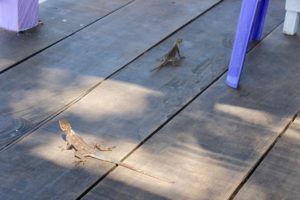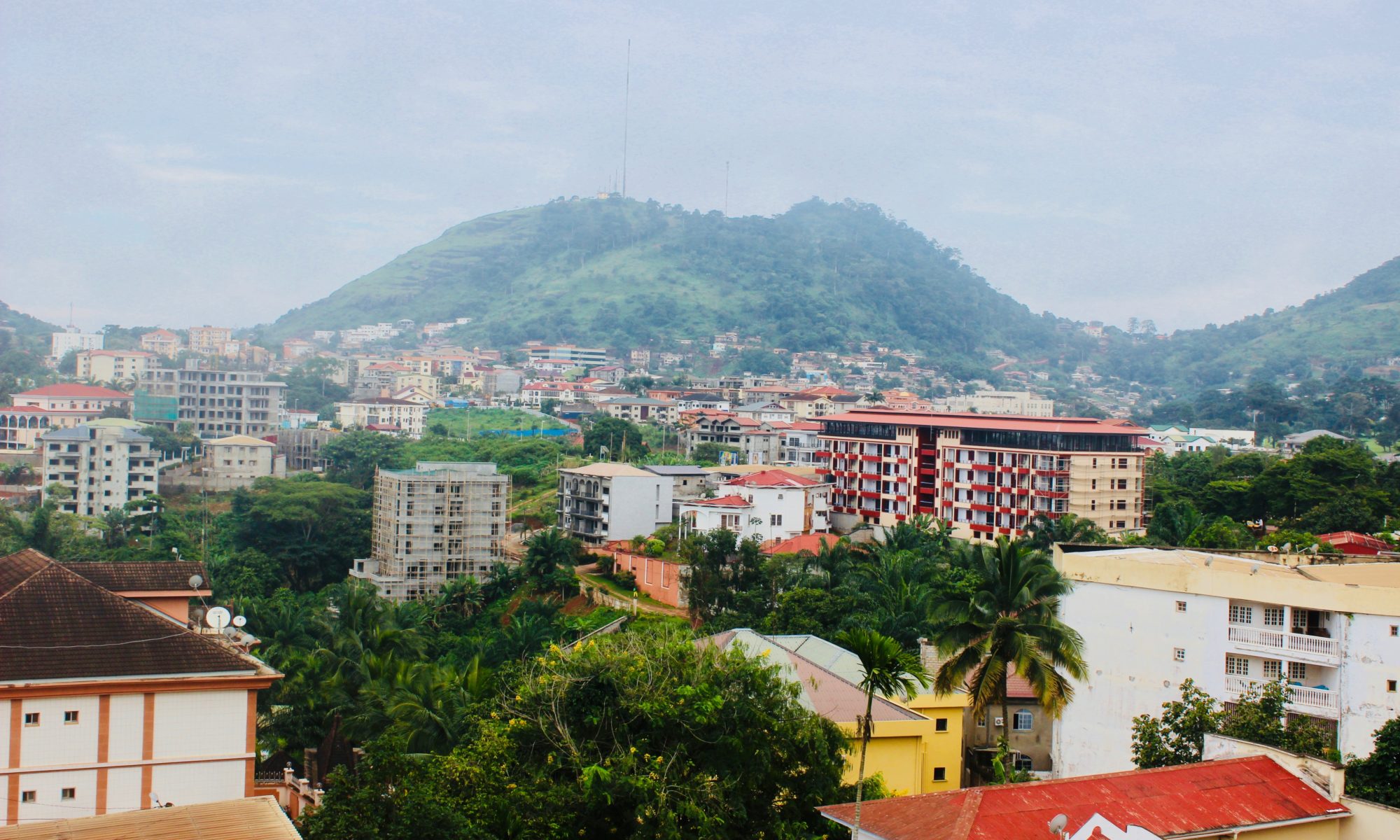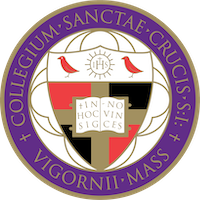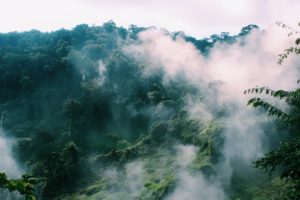
To continue with our trip…
We took a slight detour on day three and went to observe the spot where there was a huge landslide a few weeks ago that caused the deaths of around 50 people. It happened during the night when a section of the mountain fell away and took part of a village with it. Sadly, the victims included many pregnant women and children. These people were forced to build their houses on unstable land without enough money or available space elsewhere to build. The government here unfortunately doesn’t mark any areas off-limits for building, so this kind of thing can happen often since much of Cameroon is mountainous.
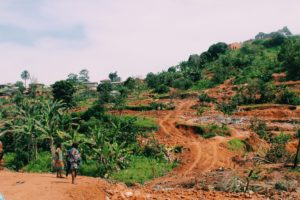
Day four started with a trip to the Ekom-Nkam waterfalls which were where Tarzan was filmed! The falls were insanely strong because the area had gotten a lot of rain over the past few weeks, so we got completely soaked from the vantage point. The mist and wind coming off the falls made it hard to properly see them from there, so we hiked to a different point above the falls and could see how tall they were (80m) and the river that continued at the bottom. It was in the middle of the rainforest, so the views were amazing. From there, we drove to Douala which is the economic capital of Cameroon (Yaoundé is the actual capital). We had heard horror stories about Douala as apparently people who live in Yaoundé hate Douala and vice versa. My host mom had said it was very hot, dusty and even more full of crazy motorcycles than Yaoundé is (I found that hard to believe!) We didn’t get the full Douala experience because granted, we were in an air-conditioned car, but we did feel a SIGNIFICANT heat difference when we got out to visit a few statues and monuments. It’s too bad that almost all monuments in major cities in Cameroon are dedicated to colonist powers and not to famous Cameroonians. The maritime museum was also very interesting to visit (our History professor got a kick out of the 3D experience) and definitely the most modern museum I’ve visited so far here.
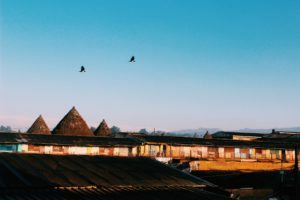
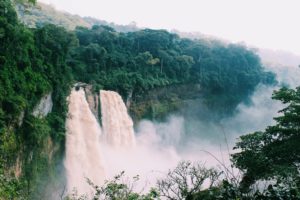
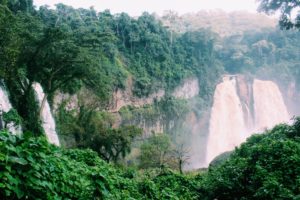
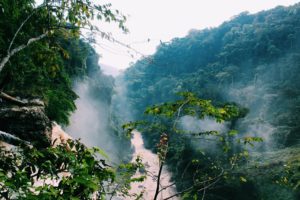
We drove into the night to get to Kribi, a little coastal town in the South of Cameroon. Our first activity there was a boat ride on the river Lobe in a hand-carved boat called a pirogue. These are the principal boats used here for fishing which is so different to see. I’m used to harbors being filled with sailboats and motorboats, but these pirogues are paddled single-handedly by the fishermen. Our guide, André, took us upstream to visit a Pygmy village, but first, he wanted us to see wild monkeys. He paddled into a small cove and we watched as tiny monkeys jumped through the trees around us and came closer to investigate the boat. They were the smallest monkeys I’d ever seen (about the size of a squirrel) and they were very curious and active. We continued upstream before hiking through the forest until we got to the Pygmy encampment. The first thing that struck me upon arrival was that the ground was covered in empty plastic whiskey packets. We had learned in class about the growing alcohol problems in Pygmy villages and that pregnant women continue to heavily drink so that many of the children are born with fetal alcohol syndrome or other disabilities. The children are given alcohol as they are growing up. It was sobering to see this with my own eyes and to see the ways in which modernization has really destroyed the Pygmy way of life. We greeted the local chief before getting a tour of the tiny village. Any artificial materials including buckets, clothes and dishware were presents from visitors as Pygmies never venture into outside cities. Most of the Pygmy people were hunting in the forest, so we only met a few. Unfortunately, we don’t speak their language so it was difficult to communicate, but it was definitely interesting to observe their way of life.
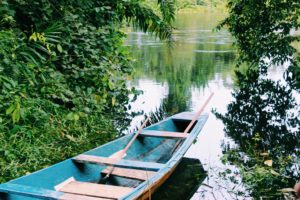
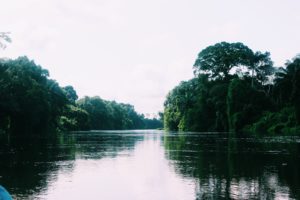
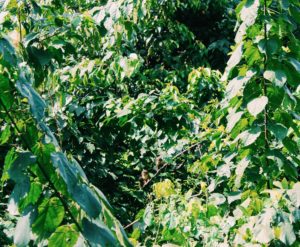
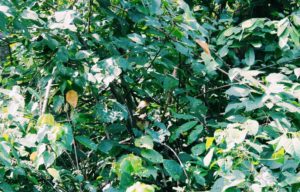
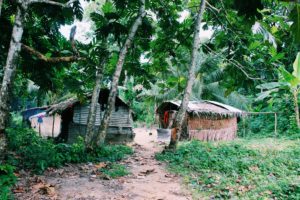
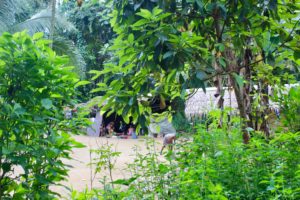
Next, we went to see the Lobe Waterfalls which were further downstream. Due to the recent rain, they were very powerful and we watched some fishermen battle in the rapids to catch fish and shrimp. The next few days we had free, with no concrete plans or things to see. So, we were able to relax at the beach (which our hotel was basically on), swim in the surprisingly warm and muddy Atlantic Ocean, and eat many coconuts which André knocked down from the trees for us. The beaches were all basically empty which was amazing so we could explore and hike around the little town. Before we left to head back to Yaoundé, our director filled up the trunk of the car with freshly caught fish we bought at the docks. This was to add to her collection of peanuts, dried and smoked fish, squash and more that she bought along the way, convinced that everything is better when bought directly in the villages that produce it.
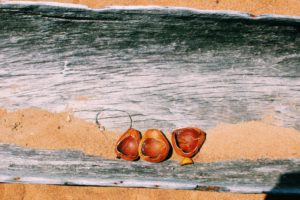

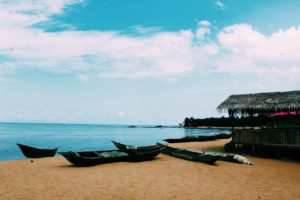
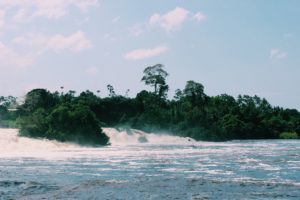
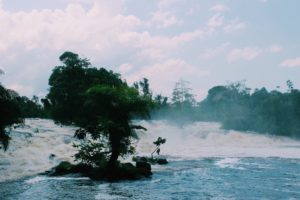
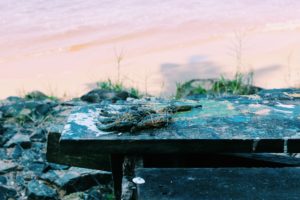
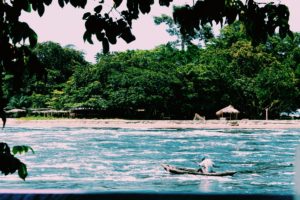
So that marks the end of our trip! It was not only a lot of fun, but I feel like I really learned a lot and got to appreciate the diversity that Cameroon has to offer. Sadly, certain areas where students have gotten to travel to in the past with the program, are now off-limits because of the ongoing Anglophone Crisis. These areas include the North, Far North, North-West and South-West. Now back to our “normal” life in Yaoundé!
